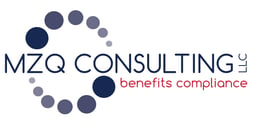
Prefer to listen instead of read? No problem! Listen to the blog post at any time by clicking here.
One of the most well-known components of the Affordable Care Act (ACA) is that it requires applicable large employers (ALEs), meaning those employers that averaged at least 50 full-time and full-time equivalent employees during the previous calendar year, to (1) offer minimum essential coverage (MEC) to at least 95% of their full-time employees and the dependent children of those employees and (2) ensure that minimum value (MV) coverage is affordable to their full-time employees at the lowest-cost, employee-only coverage level. Full-time employees that do not receive an affordable MV offer from their ALE can receive a subsidy for enrolling in Exchange coverage, which exposes the ALE to employer mandate tax penalties. ALEs are not required to offer affordable coverage to the spouses and dependents of full-time employees, though these individuals can also enroll in subsidized coverage through an Exchange if the employer-sponsored coverage they have access to is unaffordable.
The ACA defines a plan as being affordable if the lowest-cost, employee-only, MEC, and MV option costs less than 9.5% of the employee’s household income. However, the percentage of income for this purpose is adjusted annually for inflation. Recent guidance from the Internal Revenue Service (IRS) has increased the affordability percentage from 8.39% for 2024 to 9.02% for 2025. The affordability percentage adjustments apply on a plan-year basis, meaning that an employer with a non-calendar plan must satisfy the percentage for the year in which the plan year begins. For example, an employer with a medical plan year of July - June would use 8.39% for the plan year beginning in July 2024 and 9.02% for the plan year beginning July 2025. Employers with calendar year plans, on the other hand, should begin complying with the 2025 affordability percentage in January 2025.
The IRS has created three safe harbors for ALEs to establish and report on benefits affordability: the federal poverty line safe harbor, the rate of pay safe harbor, and the W-2 safe harbor (which is based on Box 1 of the W-2). The rate-of-pay and the W-2 safe harbors are calculated on an employee-by-employee basis, while the federal poverty line safe harbor is a dollar constant based on any of the federal poverty level guidelines in effect within six months before the first day of the ALE’s plan year. Of note, because it is unlikely that employers will have access to employee household incomes, ALEs are permitted to perform their affordability determinations according to the income the employee receives from the specific ALE.
Employers with calendar-year plans should soon begin considering what their 2025 benefits package will look like and how the percentage increase may affect their overall 2025 strategy. Setting new health plan premium contributions for the 2025 plan year will require some thoughtful consideration from ALEs that strive to maintain robust benefits packages while complying with the ACA’s affordability requirements. Please reach out to MZQ Consulting if you have any questions or concerns.
© 2024 MZQ Consulting, LLC. All rights reserved.
Content provided to Q4intelligence members by MZQ Consulting, LLC
Photo by inkdrop

